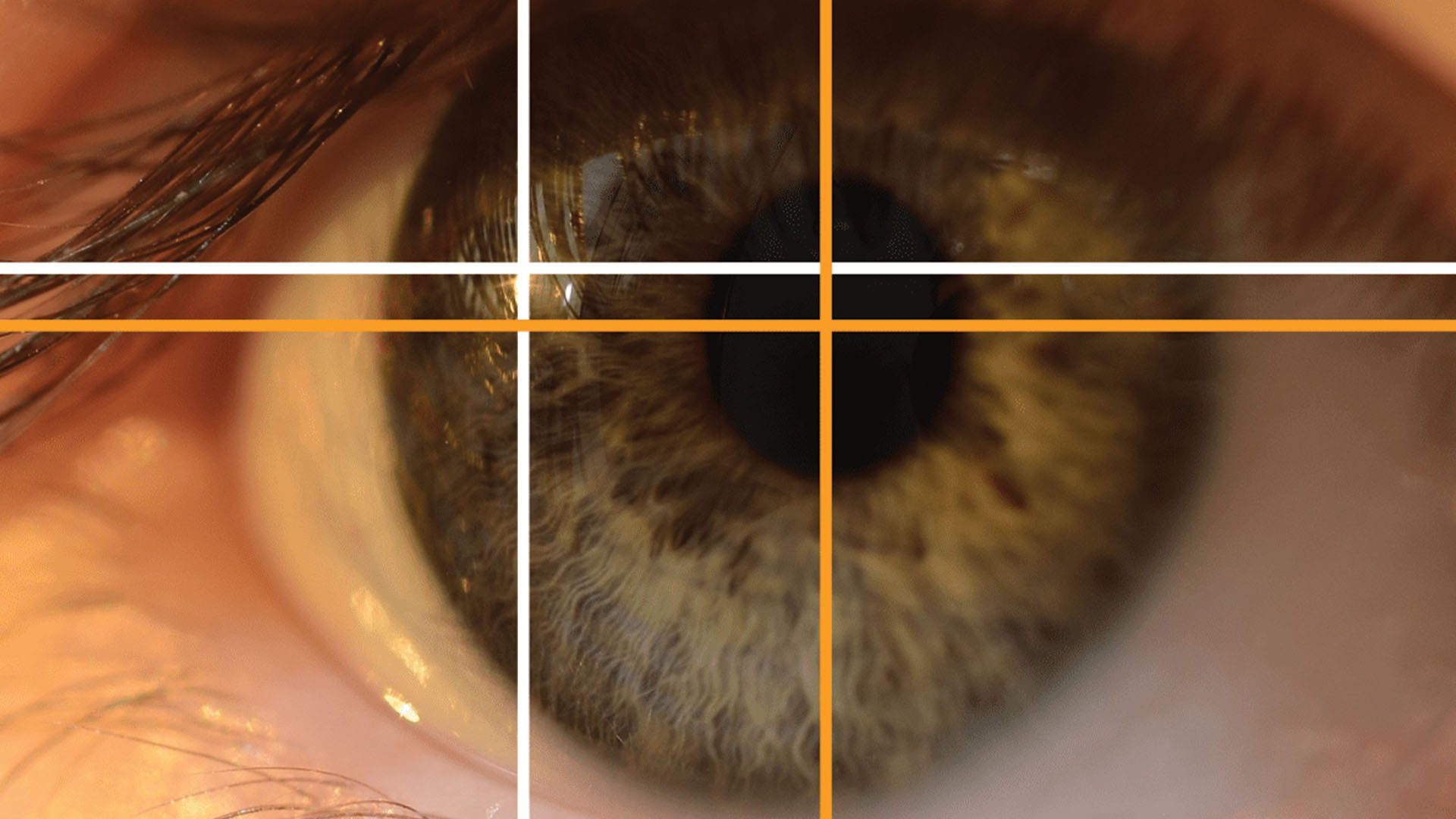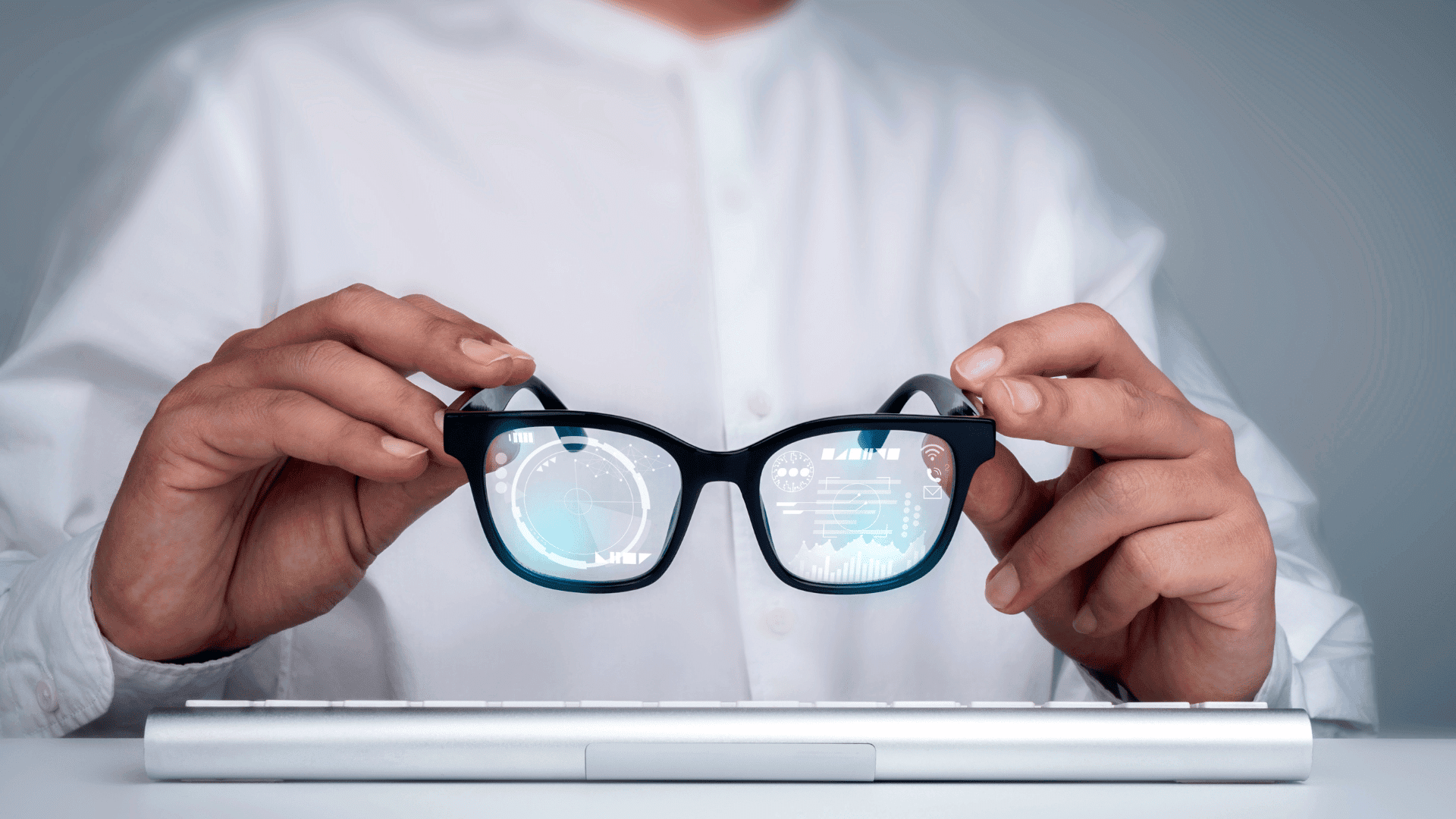From medicine to video games to advertising, eye tracking has graced technology headlines for the past few years. What is eye tracking, and is it the future of technology?
How Eye Tracking Works
Eye tracking is a sensor technology that detects a person’s presence and follows what they are looking at. A system typically comprises one or more cameras, light sources, and computing capabilities. The eye tracker uses invisible near-infrared light and high definition camera to project light onto the eye and record what direction it is reflected off of the cornea.

Photo Credit: Imotion
This data system contains information like pupil position, blinking patterns, the gaze vector for each eye, fine eye movements, and gaze points. Algorithms, machine learning, and advanced image processing then translate the camera feed into relevant data points. A recording and visual map can also be made of where the person was looking in a scene.
The most pertinent eye movements for eye tracking technology to measure are fixations, saccades, and smooth pursuit. Fixations occur when the eyes stop to collect visual data. The longer a fixation is, the more visual information is processed. Saccades are the rapid movement of the eye between fixation points when the center of gaze shifts from one part of the visual field to another. The eye moves from one object of interest to another. Lastly, smooth pursuit occurs while looking at and following an object in motion.
Types of Eye Tracking Technology
There are three types of eye tracking technology: screen-based, wearable, and webcam. Screen-based eye tracking devices are stand-alone and remote. A participant sits in front of a screen that has a panel or stand-alone unit mounted below or near the screen. The participant is then presented with multimedia stimuli like photographs, websites, videos, or games meant to trigger, record, and analyze eye movements. Screen-based eye tracking is often used for developers or researchers who want to collect high-quality eye information in a static test setting.
Wearable eye tracking technology includes eye tracking glasses and select virtual reality (VR) headsets. They contain a built-in scene camera and microphone to record the environment. Since they are fitted near the eyes, respondents can move around freely as they naturally would. As a result, this technology is ideal for studying behavior in real-world situations such as browsing grocery store aisles, playing sports, interacting with others, and consuming media.
Unlike the other two, webcam eye trackers don’t have sensors, infrared light beams, or specialized cameras. Instead, they solely rely on the image composed from the webcam device attached or built-in to the computer. An algorithm then calculates the position and direction of the head and eyes, which is correlated to an image on the screen. Webcam tracking is ideal for large-scale studies that require a fast turnaround time, such as product design.
Applications of Eye tracking technology
One of the main benefits of eye tracking technology is its applicability to a multitude of disciplines, industries, and motivations. Since it can objectively and accurately record and analyze visual behavior, it gives researchers insight into humans’ subconscious, natural cognitive processes.
Market Research
Because it provides detailed and unbiased information, eye tracking is very attractive to market researchers and advertisers. It allows them to study the natural princess consumers go through when they view a product, store, package, etc. It can also provide valuable insights into the user experience of a platform, service, or store.
For example, global company Unilever ran an eye tracking study inside the company’s Customer Insight and Innovation Centre. Participants wore wearable eye trackers to record their attention to the products on the shelf, analyzing how they visually engaged with various features and what elements they were drawn to. As a result, Unilever determined what design, display, information, and packaging features resonate most with shoppers.
Scientific Research
Scientists have also used eye tracking technology to gain valuable insight into learning patterns and development. It has also been used to detect signs of cognitive dysfunction or disease in patients with Alzheimer’s, Parkinson’s, autism, and many more. Similarly, dyslexia and other reading or learning difficulties can be identified and studied by using eye tracking.
For example, researchers from the Cardiff School of Geography and Planning used eye tracking glasses to understand how and why compulsive behavior starts among people with Tourette syndrome. Since people with Tourette’s typically cannot articulate a reason for this behavior other than diminishing uncomfortable sensations produced by the disorder, eye trackers allowed for an objective perspective. The results of the study helped shape societal and academic awareness of the disorder and may aid the development of behavioral therapies.
Video Games & Entertainment
Eye tracking technology is also utilized for entertainment purposes, most often for video games. When combined with haptic feedback, eye tracking enables users to feel like they are truly in the game.
For example, the PlayStation VR 2, expected to be released in 2022, will feature eye tracking. It will detect eye motions so that a simple glace in a specific direction creates input for the game character. This will integrate foveated rendering, enveloping graphics, and extended gaze control. As a result, users will be able to act more intuitively with a heightened emotional response.
Future of Eye Tracking
As of 2022, eye tracking is still predominantly used for research and science. However, there has been an increase in its use in consumer-driven purposes such as the PlayStation VR and other VR systems.
A forthcoming app MoviePass also announced that they will use in-app eye tracking to prevent users from looking away from ads. For this movie app, instead of paying a monthly membership, you may now earn virtual currency to spend on the movies within the app. The tokens are earned by watching ads; however, your phone camera will use eye tracking to ensure that you are paying attention.







